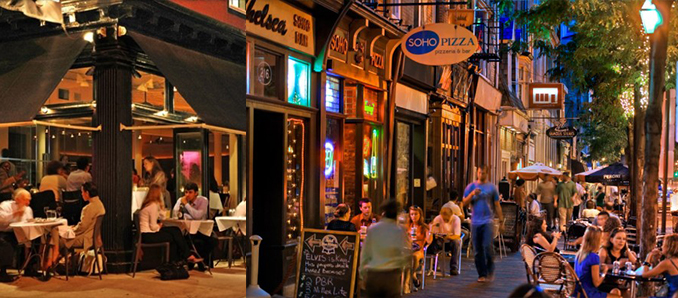As we transition to a post-COVID-19 world, consumers will look at reality through a new lens, and food and beverage brands will need to adapt.
Adapting Food & Beverage to Post-COVID Trends
That’s the message of leading brand and design expert Josh White, Principal and Creative Director of leading NYC-based brand and design agency, OffWhite Co. With more than two decades of successfully re-inventing brands – from Fortune 500 companies to start-ups – White shared his insights on what we can expect in the “new normal.”
How are consumer preferences changing as a result of the pandemic?
After months of self-isolating and physical distancing, followed by the outpouring of solidarity for the Black Lives Matter movement, consumers are craving messaging that is purpose-driven and makes them feel warm, secure and reminds them of a simpler time. Less will be more, but only if it tugs on people’s heartstrings.
Last year, Forbes was already suggesting that businesses engage with their audiences on a deeper, more emotional level to remain competitive. Post-pandemic, it will be more essential than ever. COVID-19 and subsequent anti-racist sentiments have forced us to take a collective pause and focus on what’s important — our health, families, homes and others in our community.
The good news is that, after being in a shelter-in-place self-preservation-mode, consumers are starting to spend again – as we saw with May’s record 17.7 percent increase in retail sales – yet, with a newfound outlook, they’re spending differently. While their hearts are still close to home, consumers are craving to indulge, in moderation. With movie theaters, restaurants, bars, and other entertainment outlets shuttered, they’re increasingly looking for self-satisfying consumption experiences in other ways – particularly online.
How can brands respond to these new preferences?
Over the last few months, we’ve been approached by numerous food and beverage companies looking to enhance or reimagine their online experience, including businesses migrating their wholesale strategies to an online retail solution. An online presence is no longer a ‘nice to have,’, but a ‘must-have’, and brands that do so in an effective way will come out ahead. The catch is that it must be taken up a notch to offer the engaging, lifestyle experience that today’s consumers are after.
PepsiCo, for example, has used COVID-19 as a launch pad to introduce two “feel good” websites offering direct-to-consumer home delivery options. PantryShop.com connects with consumers on an emotional level by offering pantry kits labelled with heartwarming names such as “Rise & Shine,” “Everyday Pantry” and “Family Favorites.” Similarly, the company’s Snacks.com website enables consumers to customize their snacks in a simple, fun and entertaining way, and have them shipped directly to their door.
When it comes to messaging, it’s critical for brands to both reaffirm their value commitment to the consumer and be clear about what they stand for. Consumers will gravitate towards brands that not only prove the safety, quality and awesomeness of their products – from ingredients and production process, to packaging and delivery – but also their social responsibility, most notably, their stance on racism and social injustices.
Weaving this fundamental social messaging into a brand’s DNA has become more important than ever, as we’re seeing with staple brands such as Quaker Oats, which is retiring its 131-year-old Aunt Jemima brand and logo after acknowledging its origins are based on a racial stereotype.
What can brands do now to prepare for the post-COVID-19 world?
In the post-COVID-19 world, themes of comfort, safety, stability and practicality – mixed with an environmental-meets-tech consciousness – will need to be foremost on every brands’ asset checklists.
Take a step back and reassess who you are as a business and how you’re communicating that message to your audience. Are you really in tune with your customers or are you peddling your own idea of what they want or need? Think about how you’re currently resonating with consumers and translating their preferences into your overall brand strategy and assets.
Does your brand story, messaging, choice of typography and color, and packaging elements deliver a simple, trusted and inviting feel that today’s consumers relish, perhaps topped with a touch of luxury to address their simultaneous desire for indulgence? Can you adapt your offering, perhaps through a partnership, to provide do-it-yourself home kits that incorporate your products and provide a new level of convenience and comfort for your customers?
Anything you do to upgrade your brand’s user experience and interface design (UI/UX), and enhance a “contactless” experience for consumers will put you ahead of the competition as well. Consider options such as using leading-edge augmented reality to engage customers, as well as seamless online delivery options beyond Amazon (which, as we saw, negatively impacted products that were deemed as “non-essential” during the pandemic).
Read Also: Ledo Pizza Names Will Robinson CMO – Food & Beverage
COVID-19 has also caused a surge in environmental consciousness, which was already on the rise pre-pandemic. As the world came to a stop, consumers began to notice and appreciate nature even more, and brands with solid environmental solutions — from plant-based and edible offerings to reusable, biodegradable and zero-waste packaging — will be well positioned for growth.








